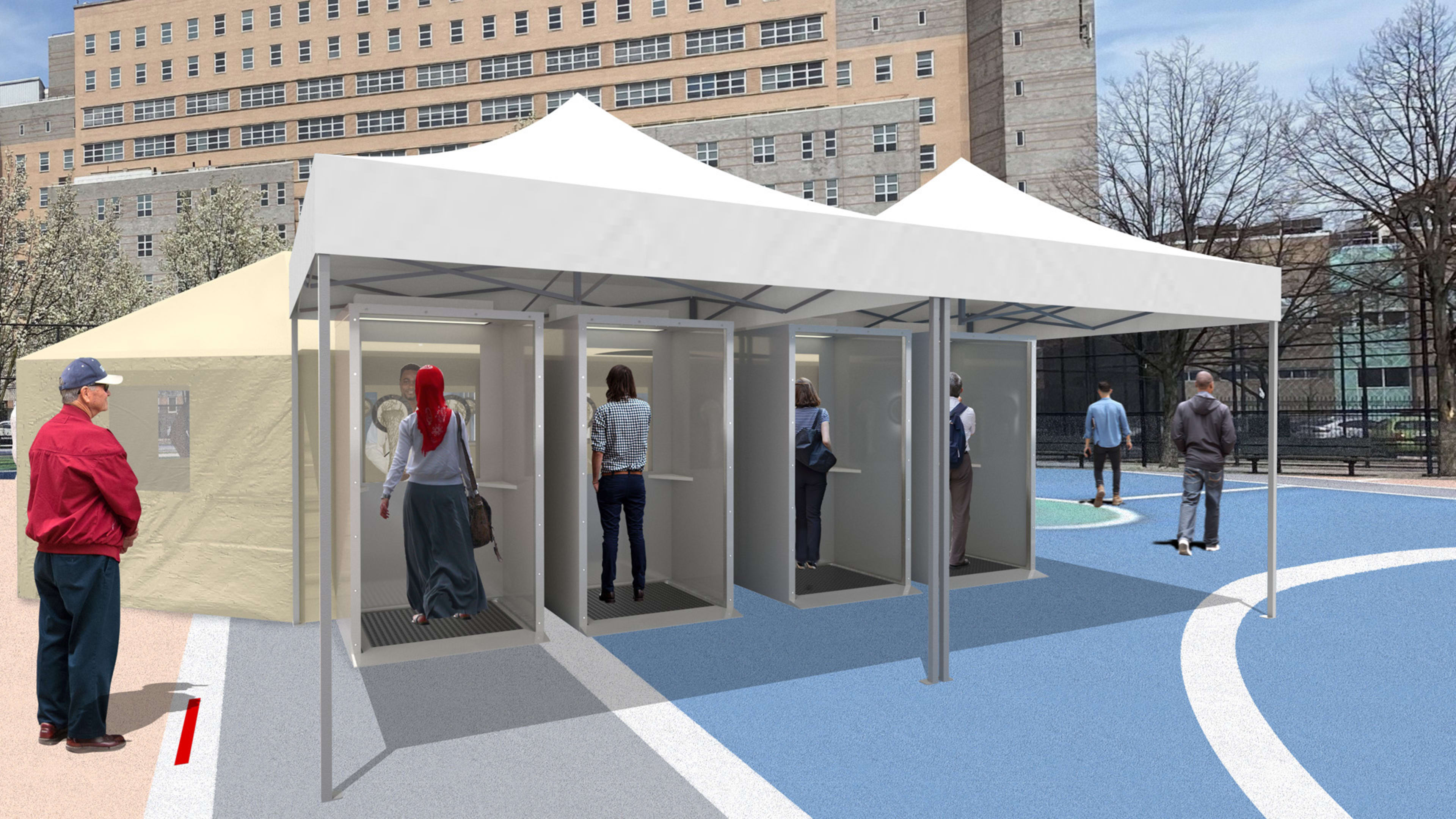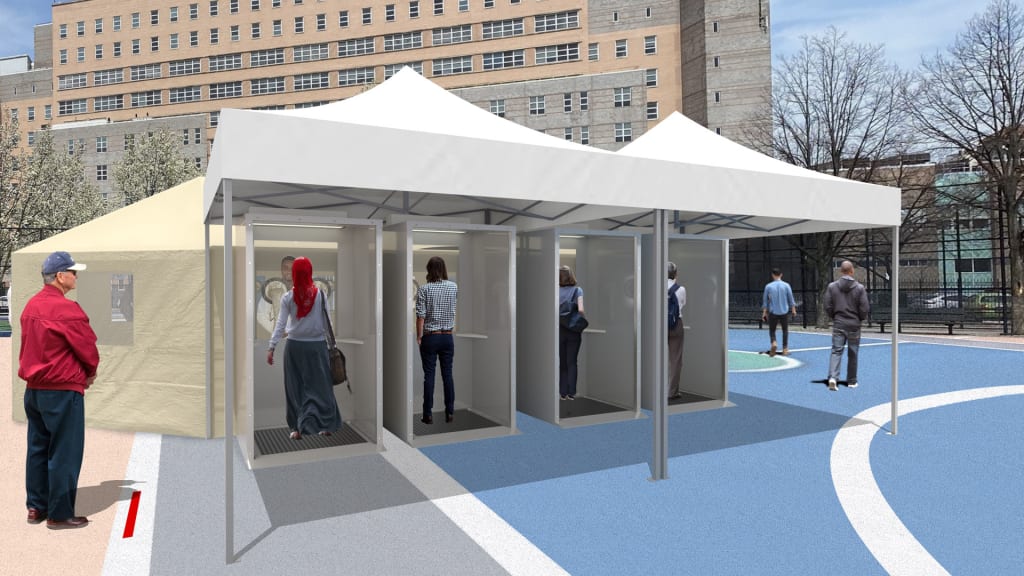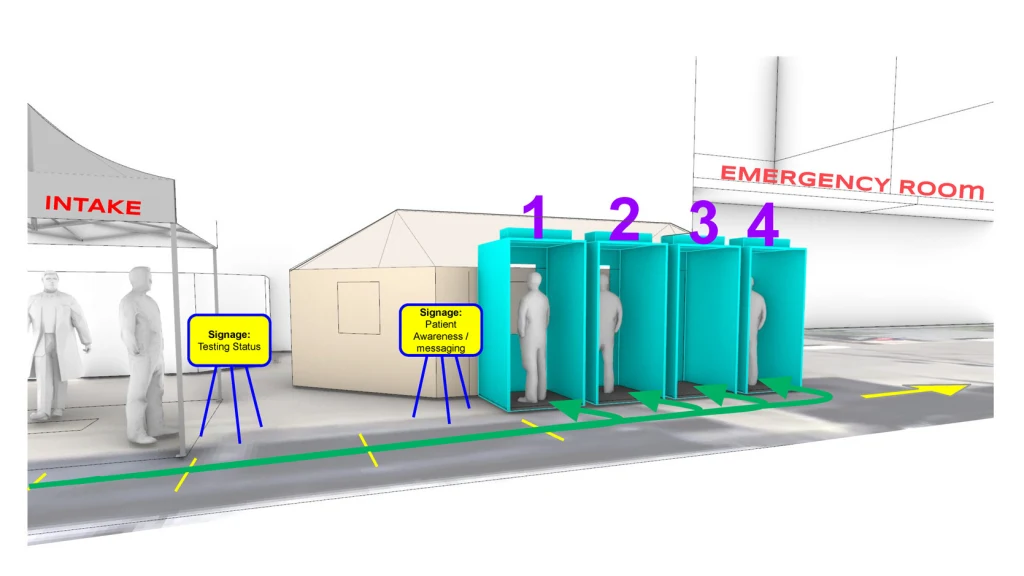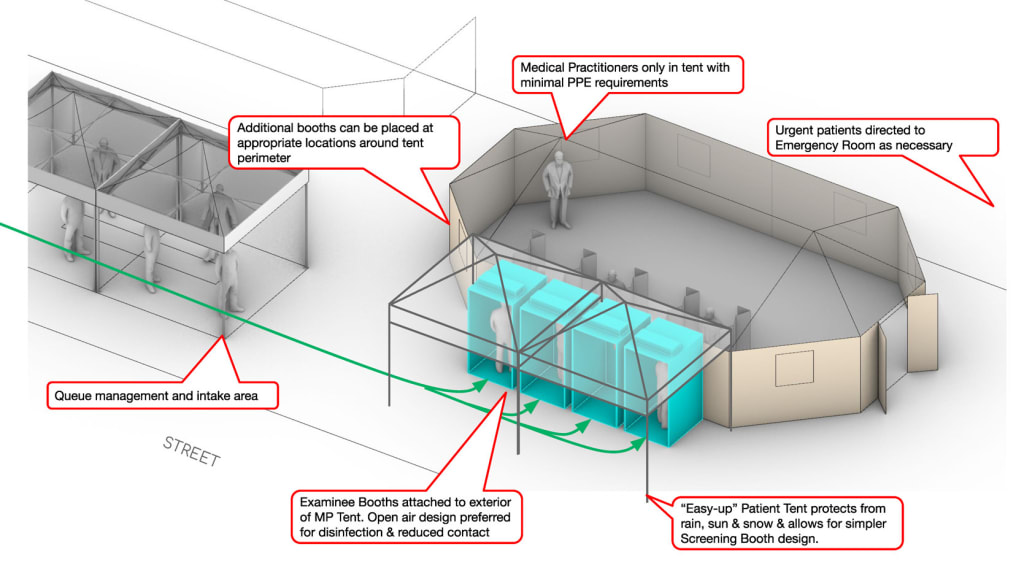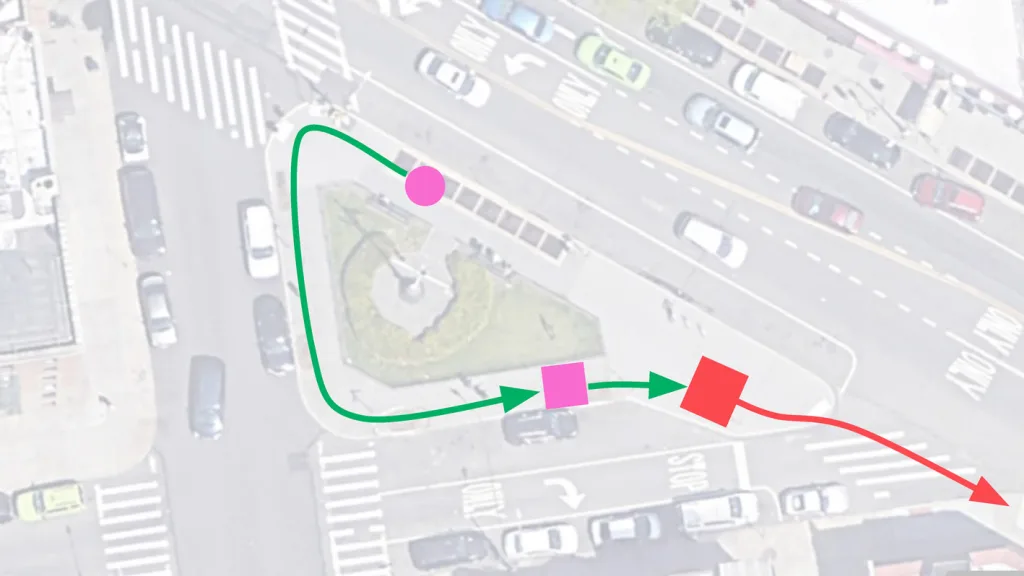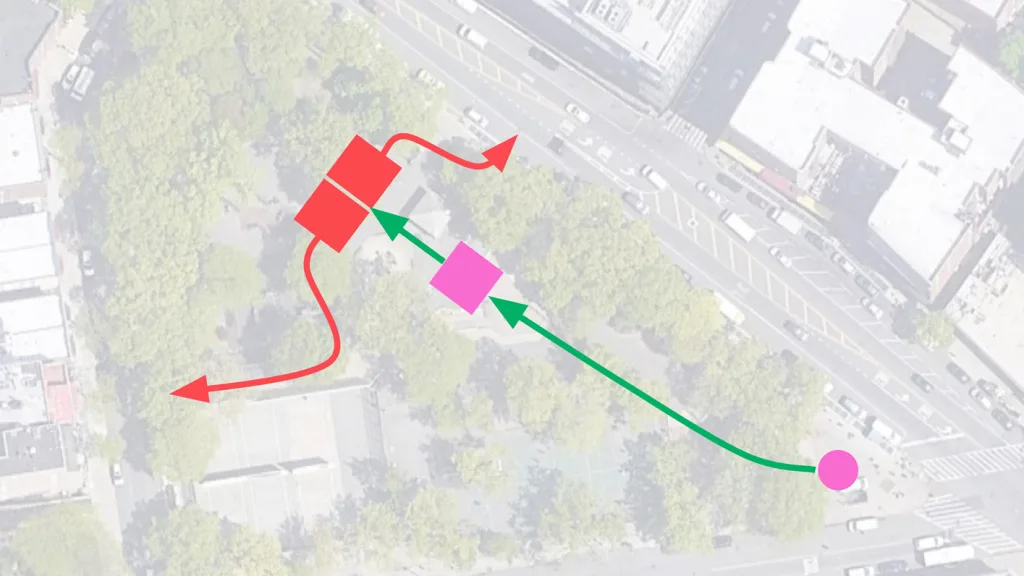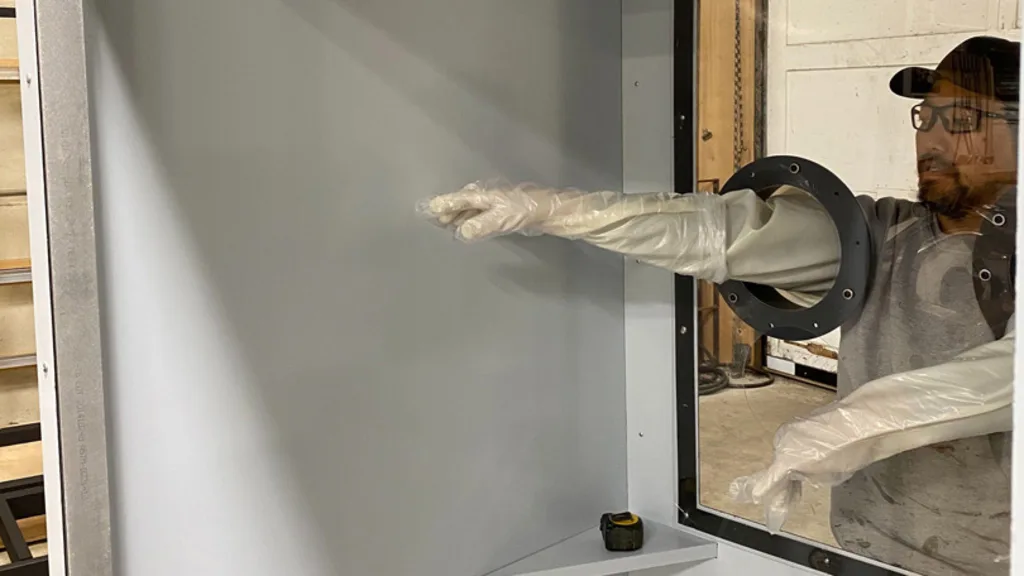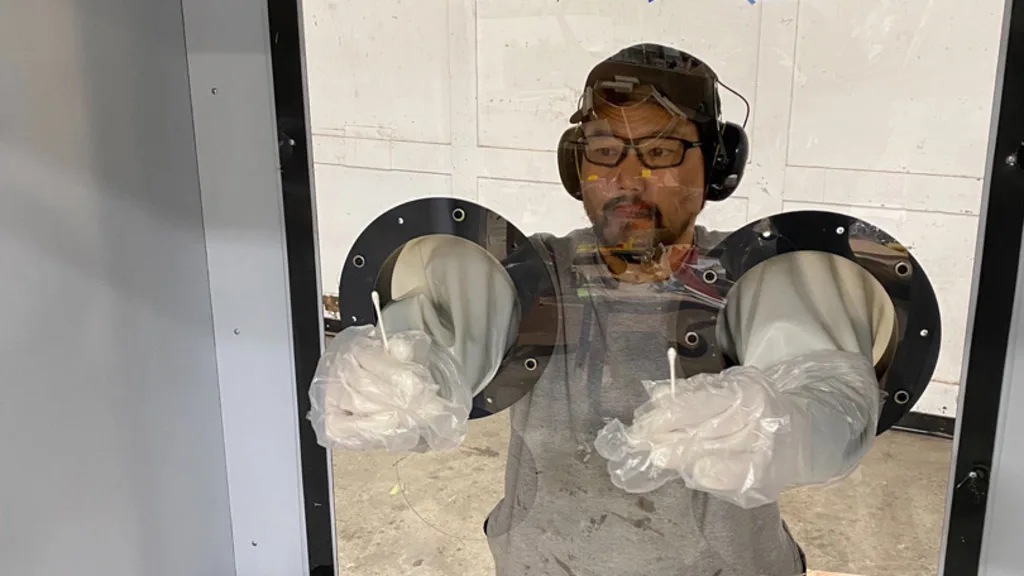Testing for COVID-19 remains one of the biggest challenges in the United States. To meet demand, many cities have established drive-through testing; others, like New York City, have pop-up tents. But no matter how you get tested, you still have to interact with a medical professional, which puts the worker at risk (and you, if you’re not actually sick). The architects at SITU, a New York firm that has worked on everything from urban solar panels to human rights violations, are developing a solution: outdoor screening centers that let you get a COVID-19 test, without having to come into direct contact with anyone else.
Based on models used in South Korea, these patient screening centers resemble phone booths, and they allow people to get professional medical counsel, along with a COVID-19 swab test, contact-free. They are housed under medical tents, usually found just outside of emergency rooms, and can be manufactured quickly, then deployed to hospitals in need.
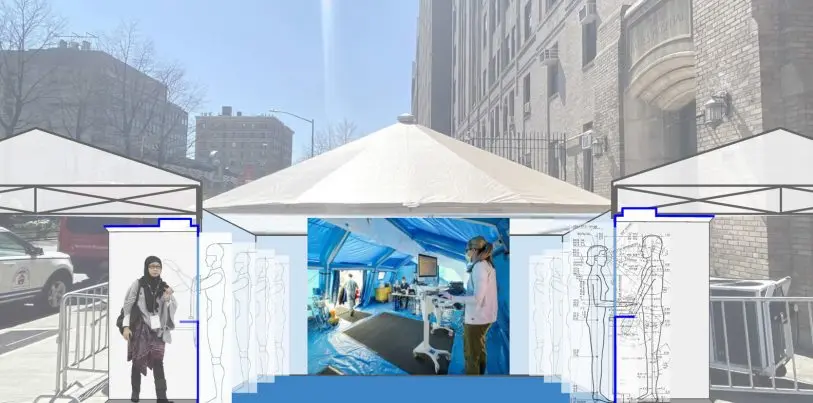
The unique constraint for this project is that it must address both testing and evaluation scenarios. “There are strategies for mitigation and strategies for containment, and this project applies to both,” says Brad Samuels of SITU. “These are being used for evaluation of people who are symptomatic, but also looking forward in a month or two—when we hopefully have more testing available, as well as testing sites—that’s more of a containment scenario.” Currently, most people with COVID-19 symptoms are staying at home until they become sick enough to need hospitalization (or medication). While these testing centers will be primarily used by symptomatic people seeking a test, they can eventually help contain the spread of coronavirus by testing asymptomatic people, too (as other countries have done) to ensure that citizens aren’t unknowingly passing the pathogen along.
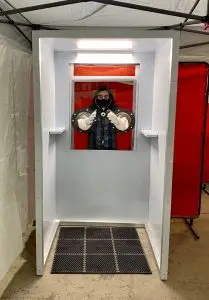
Once the design template is complete, SITU will build its own booths to be placed near hospitals with the highest density of coronavirus cases. The architects eventually hope to outsource production to other companies as well. Samuels estimates that alone, SITU can make roughly four booths in a couple days; through collaboration with other organizations, that production timeline will only be sped up.
After SITU completes revisions to the prototype over the next few days, the architects hope to start building booths immediately. Queens could be the first target, the New York City borough that has been hit hardest by the virus. The firm has developed strategies to scatter booths around hospitals in most dire need — placed carefully at a distance in an effort to address the bottlenecking that’s been happening as people wait, less than six feet apart, to be tested.
Samuels compares the booths to drive-through screening facilities, which have been remarkably successful in testing large volumes of people. But New York and other dense urban areas don’t have as much space and as many people who have access to cars. These pop-up booths achieve a similar goal, for a city known for it’s walking culture. “[This is like] an ambulatory drive through,” he says. “An alternative to using cars where people can walk up and get the same kind of testing.”
Recognize your brand’s excellence by applying to this year’s Brands That Matter Awards before the early-rate deadline, May 3.
